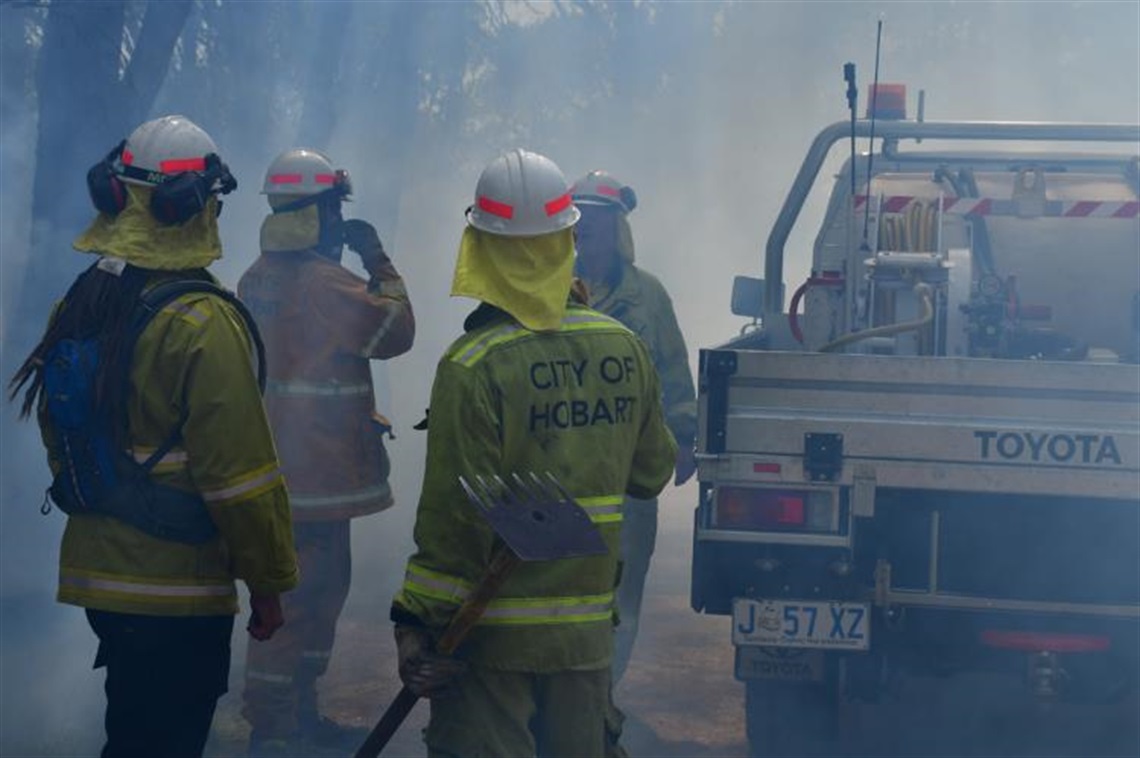
Even as snow dusts Kunanyi / Mt Wellington, Hobart is being urged to prepare for devastating bushfires like those seen in Los Angeles. Experts warn that climate change is reshaping fire risk, and the city must act now to build a fire-ready community before disaster strikes, writes Hobart Lord Mayor Anna Reynolds.
As we see the first dusting of snow on Kunanyi / Mt Wellington, bushfire is probably the last thing on our minds.
However, with the world’s global average temperature at highs never experienced in human history, we have so much preparation to do.
Hobart has been warned to prepare for bushfires like those that swept through Los Angeles in January.
This warning came from Dr. Margaret Moreton, CEO of Gender and Disaster Australia, who spoke at a special Emergency Management Committee meeting that the Council recently convened.
Dr. Moreton emphasised that while fire and emergency services are well-prepared for large-scale bushfires, we have not dealt with an evacuation of a large urban community, nor the house-to-house ignitions like those experienced in LA.
The session we convened last month created space to think collectively about the new and confronting questions that the Los Angeles event raised. Questions such as - are we equipped to deal with ember attacks deep into our suburbs? Have agencies planned for large-scale evacuations? Should we all be doing more to help residents to adapt their homes to the more dangerous fire weather coming with climate change?

The Los Angeles wildfires from earlier this year.
This special forum brought together local and national experts and emergency managers to explore how we can try to better plan for the unimaginable.
We are reviewing the discussions and suggestions from this meeting and will work with agencies like the Tasmania Fire Service, and Tasmania Police to address priority actions.
While the Council is not an emergency management responder, we have a role in convening the key agencies and encouraging them to consider Hobart’s particular needs and challenges.
A major theme that emerged from the forum is that we need the community to better understand their growing role in reducing risk.
This means government agencies need to be open with the community about what risks can be managed and which risks will be more difficult to deal with.
It also means we need to see more focus going into building a fire conscious and fire ready community. Funding to build a more resilient Hobart needs to be on par with or even greater than the budget, dedicated to firefighting.
The catastrophic 1967 Hobart bushfire remains a defining event in Tasmanian history. It moved so rapidly that few people had time to prepare as the fire approached the city. In the space of just five hours, 62 people lost their lives, 900 people were injured, and about 1,400 buildings, mostly homes, but also factories, schools, churches, and post offices, were destroyed.
Since then, residential development on the urban fringe, means more people than ever in Hobart live close to bushland valleys and ridges.
Places like Mt Nelson, West Hobart, and the foothills of Kunanyi/Mt Wellington were developed at a time when there were few, if any, planning laws requiring houses to be built to withstand bushfire. This fact makes us the most bushfire-prone capital city in Australia.
And while there’s often a focus on bushland management and the houses right next to this bush, the LA experience shows us that another challenge is embers sparking house fires deeper into the suburbs and then triggering house-to-house ignitions.
This is why so many structures were lost in LA. And this is why is makes a tremendous difference whether you fireproof your home or not.
Many images from LA and other fires show single homes standing untouched amid the ruins around them. Often, it’s because of how those properties were built or prepared.
Simple actions matter - enclosing eaves, installing ember-proof mesh on vents and around underfloor areas, and using stones and pebbles instead of mulch in gardens next to your home can make a significant difference.
Trees should not be growing next to the house, although there’s evidence to suggest that healthy green trees in your garden can act as a barrier to falling embers reaching your house.
So, what will change as a result of this forum?
My hope is that we use our discussions to ensure that our strategies adapt to these dramatic times in which we live. At Council we’ll continue to work with the Emergency Services and with our community. We need to educate the public on building resilience into their homes and gardens.
TasWater may be required to advise that just like in LA, domestic water usage can impact on water pressure for available firefighters.
Emergency agencies might want to clarify the “leave early” messaging for extreme and catastrophic fire days, because this warning may mean different things for different people.
There might also be a need for more engagement with vulnerable communities, such as aged care homes, to ensure these places have considered their options.
We also need to conduct more regular and realistic simulation exercises, pushing them to test extreme, large-scale, and complex scenarios.
This will help us be better prepared.
As Hobart’s Lord Mayor, I am keen to do what I can to convene the conversations about how our city is as prepared as possible for the threat of bushfires.
The disasters we see on our screens can be upsetting, but they can also be an important way to learn from these real-world experiences and bring innovation into strategies.